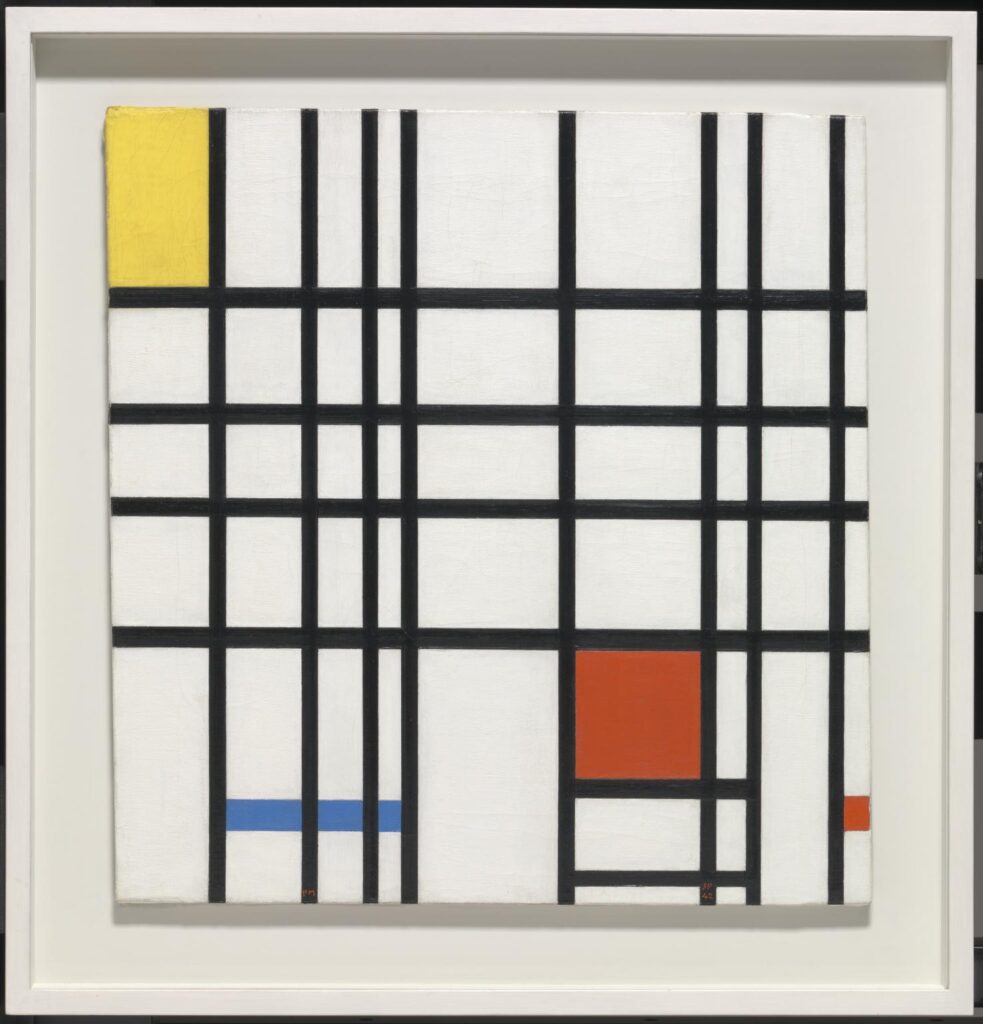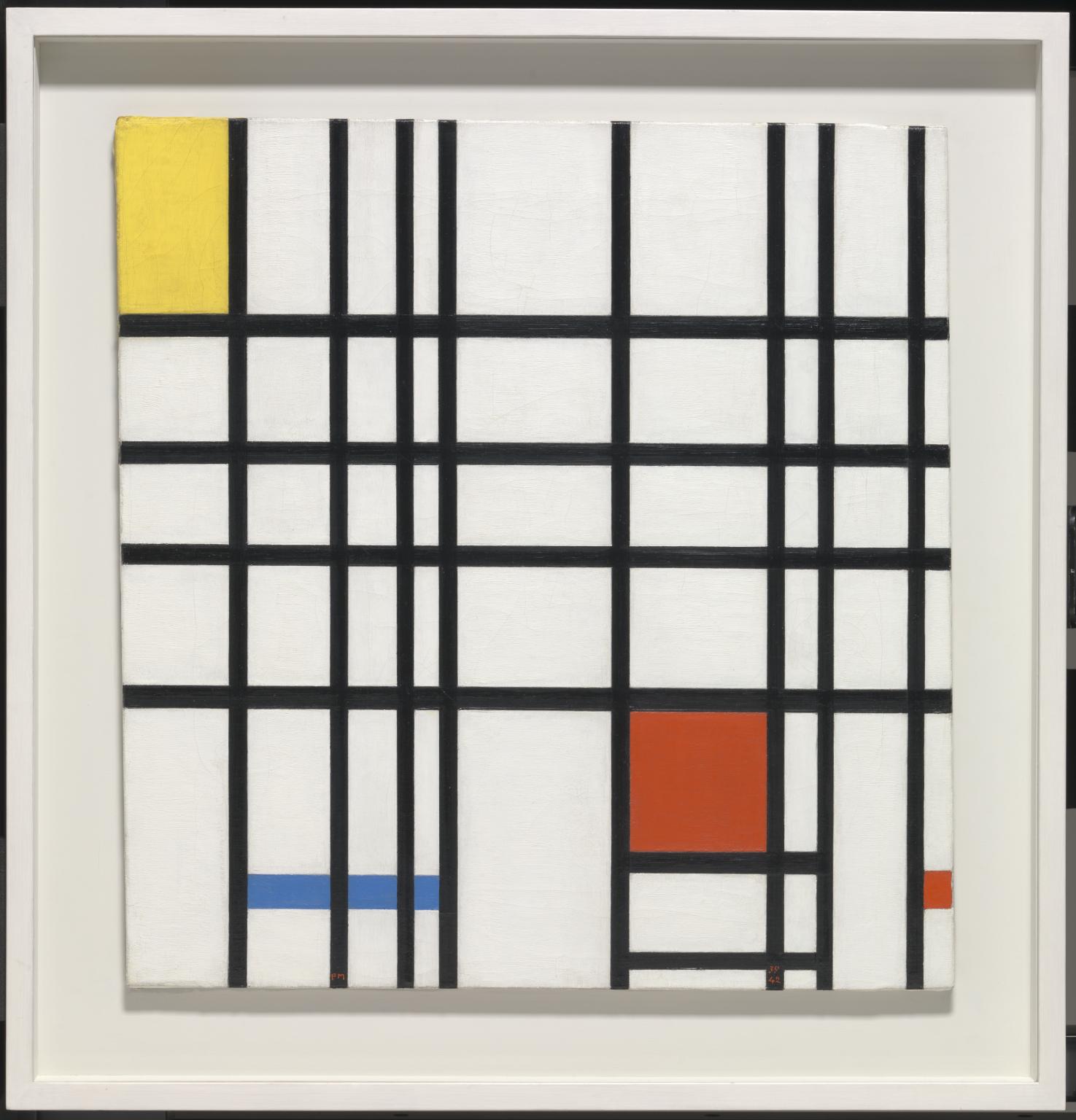1 June 2023
Hilma af Klint & Piet Mondrian – Forms of Life
Tate Modern
20 April – 3 September 2023
Review by William Morton

There are a number of reasons why the Tate has chosen to hold an exhibition covering the Swede, Hilma af Klint (1862-1944) and the Dutchman, Piet Mondrian (1872-1944). They were roughly contemporaries, although there does not appear to be anything to indicate that they were aware of each other’s work. They were both classically trained and gradually moved from painting the natural world to painting abstracts with no reference to it, although very different in style – Mondrian’s consisting of straight black lines and the odd square of colour and af Klint’s large canvases of unspecific shapes in pastel colours. Another link between them was that they were both keenly interested in Theosophy, the idea that there is a further dimension beyond the natural world and superior to it. In af Klint’s case, this was combined with a belief in spiritualism and she and her circle of female artists regularly held seances.
The Exhibition clearly shows Mondrian’s progression from painting rustic scenes in a naturalistic way to trees where there is only a suggestion of foliage and branches and sand dunes with less and less detail to complete abstracts. He developed a theory of art called Neoplasticism intended to create pure beauty and restricted himself to using only certain colours and vertical and horizontal lines. A striking painting done before he devoted himself to abstracts is Evening; The Red Tree, where the tree, clearly recognisable as such although unnaturally coloured, seems to have an energy of its own.
Af Klint conceived the idea of a ‘temple’ (never built) in which her paintings would be displayed and did series of paintings with that in mind such as Evolution, largely abstract symbols except for a remarkable painting showing a dog lusting after a bitch. Af Klint apparently believed she had been commissioned to produce this and other works by Amaliel, her spiritual guide. A later series, The Ten Largest, represents the stages of life from childhood to old age. These are indeed big canvases of unspecific shapes. The colours of the various stages differ but the paintings contain no recognisable human form. Another series has an unusual subject – various religions at a certain stage of their development represented by segmented circles. She stipulated that some of her works should not be shown until 20 years after her death in the belief they would be better understood then.
I found both Mondrian and af Klint hard to get to grips with. Using a simple ‘Would I give their abstracts wall space?’ test, the answer would be ‘yes’ for Mondrian, while continuing to wonder what he was getting at. The answer would be ‘no’ for af Klint as they are so abstruse. To really appreciate her work would require study of her thinking and life is too short. It would, however, be a resounding ‘yes’ for her wildflower paintings which are delightful. There can be no doubt of her artistic talent.
Illustration and tile photo: Piet Mondrian, Composition with Yellow, Blue and Red (1937-1942) © Tate


